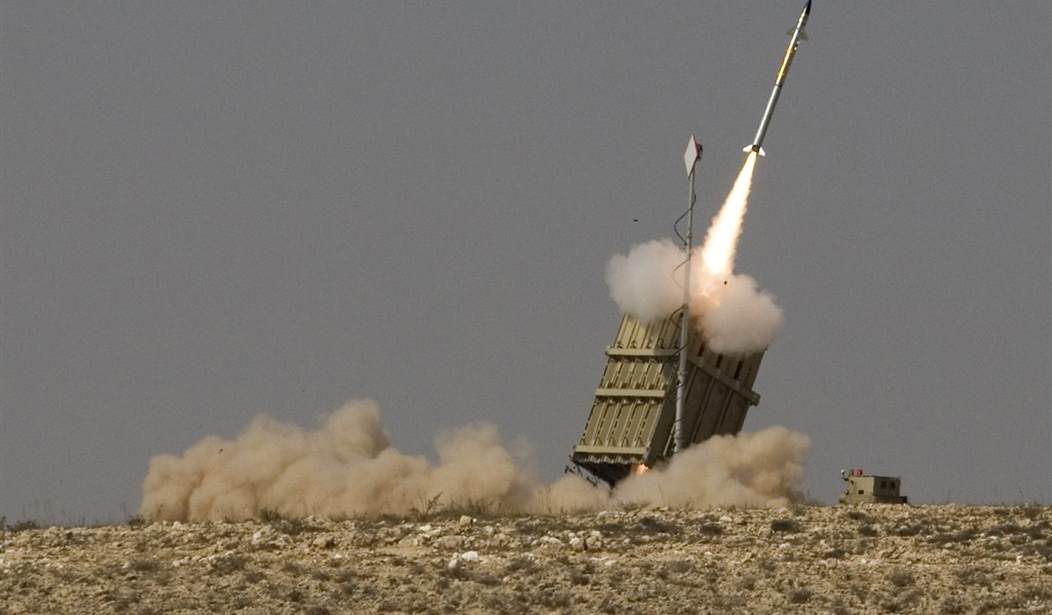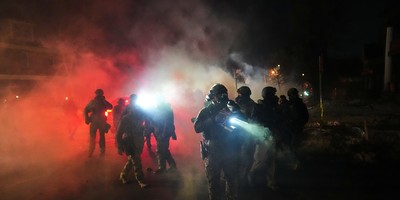If one were to believe the laudatory tones coming from within the Obama administration following the late-November conclusion of negotiations with Iran over its nuclear program, it would not be unreasonable to conclude that the vast array of threats facing the United States had diminished slightly. As President Obama saw it, the deal his administration reached contained “substantial limitations that will help prevent Iran from creating a nuclear weapon.”
Iranian Foreign Minister Mohammad Javad Zarif also hailed the agreement, stating, "It is important that all of us see the opportunity to end an unnecessary crisis and open new horizons based on respect, based on the rights of the Iranian people and removing any doubts about the exclusively peaceful nature of Iran’s nuclear program.” Zarif went on to conclude, “This is a process of attempting to restore confidence.”
Confidence for Iran, perhaps, but not for the United States. The flawed agreement reached by the Obama administration will only heighten long-term tensions with the Islamic Republic and render U.S. preparations against hostile Iranian provocations an even more dire necessity.
Not only has Iran made clear its intention to continue its enrichment program but Iranian Defense Minister Hossein Dehghan recently went on state TV to tout the increased accuracy of Iran’s ballistic missile strikes. “The inaccuracy of (our) ballistic long-range missiles in hitting targets is so minimal that we can pinpoint targets,” Dehghan boasted.
But the threat is not relegated to Iran alone. North Korea remains a belligerent and unpredictable adversary with a young, capricious leader while the U.S. Missile Defense Agency (MDA) reports that over 6,000 ballistic missiles remain outside the control of the United States, NATO, Russia, and China. MDA expects that number to rise to nearly 8,000 by 2020.
Recommended
The unpredictable nature of our global adversaries has forced the United States to take whatever measures deemed necessary to protect the homeland.
Fortunately, the United States long ago heeded the advice of President Reagan and developed a sophisticated, multi-layered missile defense program designed to counter hostile, ballistic missile threats directed toward the United States or her interests abroad.
A great deal of resources have been spent developing effective missile defense systems; however, one elemental facet of our nation’s comprehensive missile defense systems could use a boost: radars.
Missile defense systems possess multiple, coordinated elements necessary to allow the entire system to function. Once an incoming missile threat has been launched it must be identified, tracked, information relayed to other systems, and intercepted. No single unit performs all of these functions independently.
While much needed attention has been given to the procurement of advanced kinetic warheads, such as the Standard Missile-3 Block IIB, far less attention has been given to the relative paucity of radar installations required to detect and track incoming threats.
Myriad radar systems exist and are employed throughout the world. The Aegis anti-ballistic missile defense system, emplaced within Aegis equipped warships in the U.S. Navy arsenal, utilize the AN/SPY-1 radar system to track and transmit data related to ballistic missile threats and feed that information to anti-ballistic missiles that intercept the threat.
A more advanced radar system, the AN/TPY-2, is capable of more refined target discernment. Utilizing an X-band radar system, the AN/TPY-2 can detect and track targets at great distances and do so with a high resolution capability able to discern between actual hostile threats and mere decoys. The AN/TPY-2 is also mobile and can be deployed rapidly.
Although the MDA originally budgeted for the acquisition of 18 AN/TPY-2 radars, the Obama administration slashedthose numbers via budget cuts to a mere 11. Currently, AN/TPY-2 radars are forward-deployed throughout the worldin Israel, Turkey, Northern Japan, and within the U.S. CENTCOM region. An additional radar, heretofore used for testing, was earlier this year designated for additional deployment to Japan. But more are needed.
A lack of this critical element in the United States Ballistic Missile Defense System (BMDS) undermines our nation’s entire missile defense posture. While the DoD recently announced the procurement of one additional AN/TPY-2 radar, that will likely only restore the nation’s existing arsenal given the designated training unit lost to deployment.
Earlier this year, former Senator John Kyl (R-AZ) summed up the need for greater attention being placed on fully funding and supporting a comprehensive, layered missile defense program in the United States. “We’ve come a long way. Our nation, and our deployed forces and allies now enjoy a good measure of protection against ballistic missiles,” Kyl stated.
Kyl concluded, however, with an ominous prediction. “But complacency is not an option. If current missile defense budget trends continue, there will not be enough funding to accomplish even the President’s missile defense objectives; much less additional important and necessary efforts.”
The missile defense assets required to produce an effective shield capable of protecting the homeland, our allies, as well as forward-deployed troops is manifold. The Obama administration must fully commit to missile defense in its entirety, ensure ample supply of necessary resources, and place less faith on the whims of unpredictable adversaries.

























Join the conversation as a VIP Member